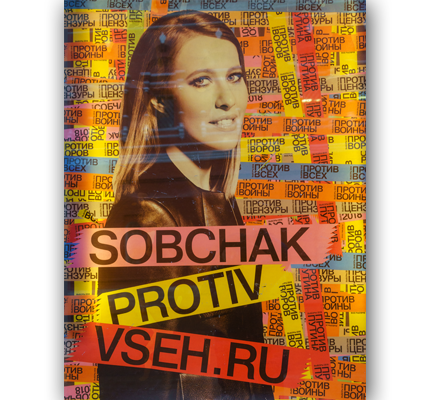June 1, 2015
The Israeli protests of summer 2011 were like no other protest event in Israel’s history. Hundreds of thousands took to the streets calling for “social justice.” Situated chronologically between the “Arab Spring” and the rise of the worldwide “Occupy” movements, and associated as well with a presumed impact of “social media” on its emergence and sustenance, the Israeli social movement, too, was identified as a “social media revolution.”
One can assume that since the Israeli media structure had been suffering from distortions that made the distribution of its assets unequal, and since one of the battle cries of the protest movement focused on the relationship between capital, government, and the media, a call for media reform would be a focus of the protest. Indeed, media reform is crucial for achieving social justice as contemporary media carries the potential to strengthen participatory democracy when reformed and regulated by justice policies that aim at unleashing this potential for the benefit of all and not for the few.
Media reform can employ three different strategies: an internal reform of the media field by the media workers; the establishment of “alternative media”; and the attempt to effect change of state rules, regulations, and policy. We decided, therefore, to ask whether media reform was presented as a goal in the social protest of 2011 and its aftermath.If so, how? And if not, why?
We identified internal professional organizations established after the protest, then we looked for alternative media formed after the protest, and eventually we analyzed by-products of the social protest, which were designed to affect state rules. For the third part of the analysis, we examined three different sources: an official policy paper structured by a public committee that Prime Minister Benjamin Netanyahu appointed during the protest period to recommend ways to “alleviate the burden of living in Israel”; the protesters’ “alternative report,” which was published as a book in the summer of 2012; and party platforms published for the January 2013 general elections in Israel.
What We Discovered
While some professional organizations were formed after the protests in Israel, the effect of this wave of unionization on the industry, as a reform strategy, is yet to be assessed. The same can be said regarding the protest movement’s extensive use of alternative media. We did not find, however, a call for structural reform in the Israeli media.
The official committee report did not make the connection between what it perceived as the reasons igniting the protests in Israel and the state of the Israeli media. Nor did it connect between its proposed recommendations for policy changes and change needed in the media landscape. The media are mentioned in a limited number of contexts in the report, always as a means, never as a goal in themselves. In its only reference to media as a public good, the committee sees “public service media” as anachronistic. Surprisingly, even the alternative report, though contradicting the government’s sanctioned report almost in every aspect, was no different when it came to media reform issues. It also neglected the issue completely.
Calls for structural changes in the Israeli media landscape were also rare in party platforms. As one example, even the opposition Labor Party,, which used a dialogue over the Internet with party members to develop its platform, did not call for media reform in the platform itself.
So What Does It All Mean?
When the protest movement attempted to re-emerge in the summer of 2012, traditional media muted its voice. In other words, the media were responsible for raising the visibility of the protest in its infancy, and contributed to its demise. This alone proves the importance of traditional media when social protests arise. So, how come the call for media reform was clearly absent from the protest’s discourse?
One explanation is that the protesters were invested in producing “alternative media” that were perceived as a change in themselves. Indeed, establishing alternative media can be seen as a type of media reform strategy, as they challenge the basic structure of traditional media by their mere existence. However, the belief that alternative media alone can promote change does not really hold water for long. The audience is still attentive to the popular traditional media, which are also dominant players in the new media world. Without an established financial backbone, the “alternatives” fold.
Another plausible explanation focuses on the neo-liberal takeover of the protest discourse. The neo-liberal agenda rules the policymaking debate in general and the communications policy debate in particular. The media are no longer seen as a public good; rather they are regarded as commercial entities. Both reports—the official one and the alternative one—analyzed in our study echoed this perception. Looking at the Israeli media from a neo-liberal perspective may have led the protesters into a false conclusion that the commercial market was functioning well.
Finally, it is the protesters themselves and the social class most of them relate to that explain the lack of a call for media reform. The protesters, and especially the protest leaders, consisted mostly of the more educated and less affluent component of the Israeli middle class. All were well connected to the Internet and have full access to “new media.” Because of the nature of this middle-class, which was created in many ways by the information economy, actual access to the media is a given.
So, while new professional organizations were formed, and while a plethora of alternative media sprung up, the “Facebook protest” could not see beyond neo-liberal and commercial interests when discussing media reform, and was blind to the need for structural institutional regulatory reform that may contribute to a communicatively just society.
Reality on the ground, almost four years after the protests, demonstrates that not only was there no change in the structure of Israeli media, but also there was no real change in Israeli society, and social justice wasn’t achieved. The social movement whose creation was so strongly associated and supported by an understanding of contemporary media’s inner working and infrastructure missed an historic opportunity to demand a truly just media reform.









